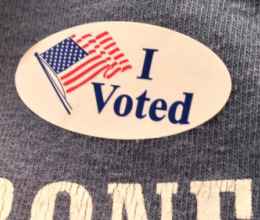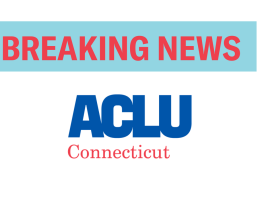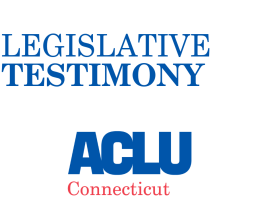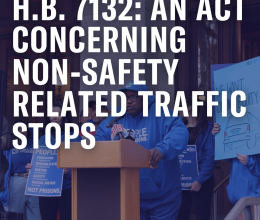
The right to vote is precious, and we must make our democracy stronger by protecting and strengthening access to the ballot box.
Right now, voters across the country are facing the greatest assaults on voting rights since Jim Crow. The U.S. Supreme Court has turned its back on the federal Voting Rights Act, considered to be the crown jewel of the Civil Rights Movement. With that gap in protection from the federal government, it’s up to states, like Connecticut, to step up to defend voting rights.
This year, the legislature has introduced a Connecticut Voting Rights Act, modeled on the federal Voting Rights Act, that would take important steps toward addressing and preventing discrimination against voters of color.
The Federal Voting Rights Act:
In a Black-led movement, civil rights activists marched, organized, and died in the fight for Black people to have equal access to the ballot box. The Voting Rights Act of 1965 was a crowning achievement of their work to ensure fair and equal access to the ballot box.
Over the years, though, court decisions chipped away at the Voting Rights Act. This culminated in the notorious Shelby County v. Holder U.S. Supreme Court decision, which had the effect of removing an important part of the law.
Shelby gutted the Voting Rights Act’s requirements that certain places with a history of racist voter suppression submit proposed changes in voting procedure to a federal district court or the U.S. Department of Justice for “preclearance” of those changes – a check and balance to make sure any proposed voting changes would not have racist harms. Since Shelby, places around the country which were previously subject to preclearance have changed voting procedures in ways that disproportionately disenfranchise voters of color.
The Voting Rights Act has helped Connecticut – and we need more
While people often think of the federal Voting Rights Act as being directed at states in the South, its protections apply to all 50 states, including Connecticut. And while some people may think of racist voter suppression as being a problem for other places, Connecticut has a long and shameful history of disenfranchising voters of color, particularly Black and Puerto Rican voters. Far from being immune from racist, white supremacist attempts to restrict voting rights, Connecticut has sometimes been the genesis of Jim Crow policies – making it critical that our state take steps to right those wrongs.
We’ve got to know our own state’s history, and its present, to understand why it’s so important for Connecticut to prevent us from going backward on voting rights, and to move us forward toward equal and fair voting rights for all.
Connecticut was the first state to enact a literacy test. The racist Jim Crow policy that some people think of as belonging to southern states was in fact, shamefully, generated here. In 1855, Connecticut created a literacy test to try to prevent Irish people from voting, and the state continued the practice for nearly a century. By the 1950s, Connecticut was one of only 12 states with a literacy test still on the books. In 1956, the Connecticut Republican Party sued to try to prevent 10 Puerto Rican men from exercising their right to vote in Windsor. The courts required the men to take the literacy test and, based on those results, ruled that seven of the ten were ineligible to vote.
Connecticut’s literacy test remained on the books until the federal Voting Rights Act finally banned them nationwide. In August 1965, the State Attorney General issued an opinion clarifying that the federal Voting Rights Act’s prohibition on literacy tests took precedence over the state law that allowed them.

In the months that followed, Puerto Rican residents especially organized to register to vote. A news outlet reported that Puerto Rican community organizers in New Britain expected around 400 people to turn out to register to vote on a single day at City Hall. In Enfield, the town clerk reported a group of Puerto Rican women were able to register to vote for the first time.
The Voting Rights Act’s protections have also been preventative. Section 203 of the Voting Rights Act requires certain towns across the country to have language assistance available for voters, depending on the percentage of voters in that town who have limited English proficiency. Most recently, Connecticut had 10 towns required to provide language assistance under the Voting Rights Act: Bridgeport, East Hartford, Hartford, Meriden, New Britain, New Haven, New London, Norwalk, Waterbury, and Windham are all required to have Spanish language assistance for voters. This is a good thing, because it means access to the ballot for more eligible voters – and there is more our state can do.
Today
With the federal Voting Rights Act under attack nationally, it’s important for Connecticut to codify its antidiscrimination protections, so we can keep what progress our state has made for access to the ballot. We also have the chance to do even more.
The Connecticut Voting Rights Act, introduced this year in the legislature and supported by a broad coalition of racial justice, civil rights, and voting rights groups (including the ACLU of Connecticut), would help to address and prevent racist barriers to the ballot box by:
- launching a “preclearance” program that requires local governments with recent records of discrimination to prove that proposed voting changes will not harm voters of color before they can go into effect;
- expanding language assistance for voters with limited English proficiency;
- creating strong protections against voter intimidation, deception, or obstruction;
- establishing a central hub for election data and demographic information that will empower officials and community members to ensure accessible elections.
Preclearance: A “preclearance” program in Connecticut could help to address some of the barriers to the ballot box that we see repeating in our state, time and again. Under the Connecticut Voting Rights Act, if a municipality perpetuated systemic racism in at least one of four specific ways outlined in the bill, it would need to gain “preclearance” before making changes to its voting system. So let’s say, for instance, a town had, in the last 25 years, been found by a court or government enforcement action to have discriminated against Black voters in a way that violated state or federal civil rights law. If that town proposed changing its voting system by, for instance, changing its voting precincts, it would be required to get permission before doing so.
Language assistance: Ballots are already often confusing and complex even for proficient English speakers, and people with limited English proficiency face even greater barriers to deciphering the ballot and voting. The federal Voting Rights Act addresses some challenges of language access to voting, but not all. More than 275,000 Connecticut residents statewide have limited English proficiency, including immigrants and indigenous people. Some other states have expanded their laws to have lower population requirements to trigger language translation, making their language assistance more expansive than here. People in towns outside of the current 10 in Connecticut may need language assistance, and people outside and inside of those 10 towns may need assistance in languages other than English or Spanish. Every voter should have the chance to make their voice heard at the ballot box, no matter whether English is their strongest language.
Protections against intimidation: Connecticut law already prohibits some forms of voter intimidation and obstruction, and we can do more. Right now, the law only deals with intimidation and obstruction in criminal court – this depends on policing and prosecution. There is no way for someone to sue in Connecticut civil court if they are intimidated or obstructed from voting, and there is no way for them to receive what’s known as “damages” – monetary compensation for the harm they experienced. The Connecticut Voting Rights Act would create a way for people to also get redress in civil court – so if someone violated their voting rights by intimidating them or obstructing them from accessing the ballot, they or the State Election Enforcement Commission (SEEC) could sue in civil court.
Central hub for election information: The Connecticut Voting Rights Act would increase transparency and further empower voters by creating a central hub of voting information for the state. For example, this online hub would include an interactive map of polling place locations and ballot drop box locations for each election in each municipality, and a list or description of the districts or geographic areas served by each polling place or ballot drop box, to make it easier for voters to find where we can make our voices heard.
New York, California, Washington, Oregon, and Virginia have all passed state-level Voting Rights Act laws. Now, Connecticut has a chance to do the same. We’re proud to be fighting along with the NAACP Legal Defense Fund and many others in pushing for the legislature to pass the Connecticut Voting Rights Act into law.





